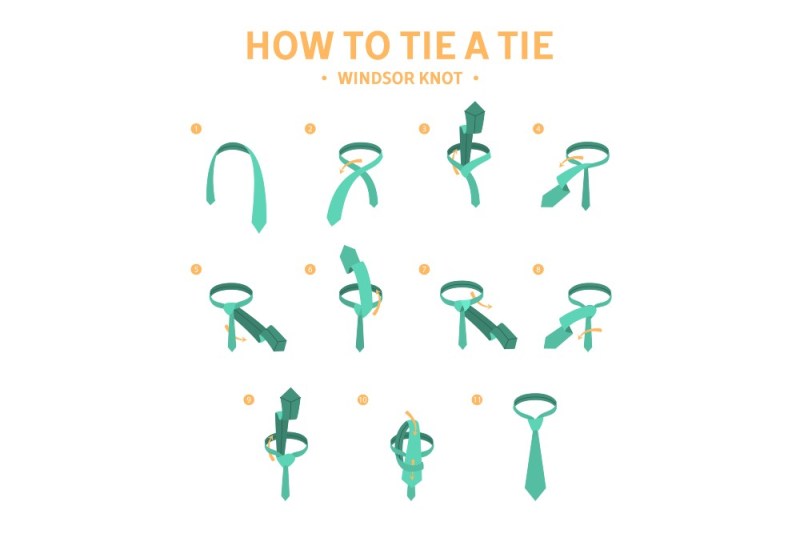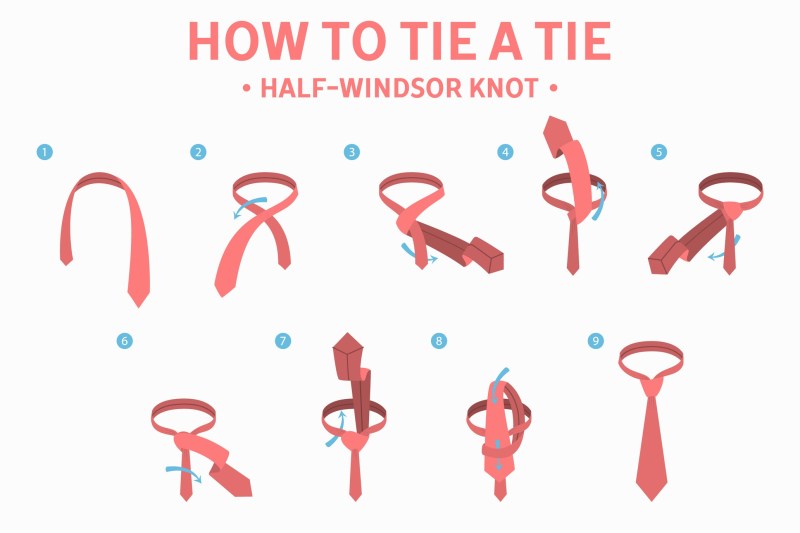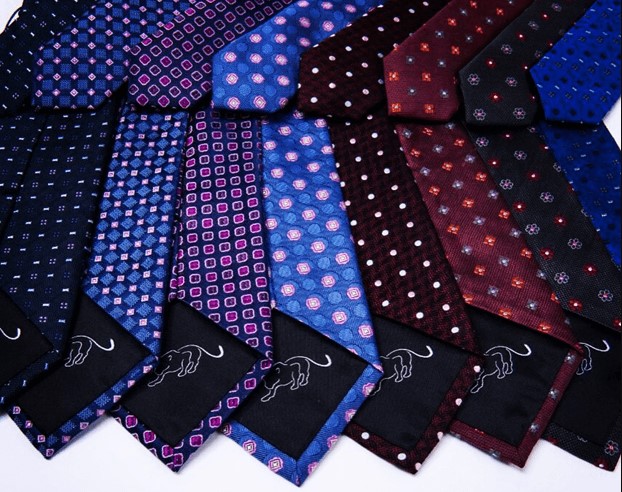
Neckties have been a staple in the gentleman’s wardrobe for centuries, reaching back to ancient Chinese warriors. Of course, they have evolved over the years, but the core of the garment has stayed the same — fabric tied around the neck to bring attention to the head. But regardless of how long the tie has been in vogue, some men still don’t know how to tie a tie.
That is where we come in, with a guide to help you figure out how to tie a tie and look your best. Of course, not every tie knot is the right one, so here are the most common four tie knots you should know. And how to tie them. Don’t forget to take it one step further and send the right message with your tie by knowing what the color says.

Four-in-Hand
This is probably the simplest tie knot you will have in your arsenal and the first one you should learn when picking up ties for the first time. These knots began (at least, it is believed) when people said that carriage drivers used to tie their reins in their hands the same way or that they wore their scarves in this fashion. One of the other accepted origins is the members of the Four-in-Hand Club in London pioneered this tie knot. However, the important thing to remember is that this tie is asymmetrical, it creates a more narrow profile, and it looks best with point and button-down collars.

This is probably the only knot you’ll ever need for all practical purposes.
- Pop your collar and wrap the tie around your neck.
- Line up the two ends of your tie.
- Tug the wider end down toward your waistline; the narrower, upward on your chest.
- Cross the wider end of the tie in front of the narrower, then bring it back around to the front. (You’ll be able to see the back of the wider end of the tie.)
- Loop the wide end of the tie around the narrower end again, but this time, bring it up under the narrow end near the shirt’s top button.
- Drop it through the loop that has been formed, and tug it down towards your waistline.
- Adjust.

The Windsor
Most of the time, men’s fashion follows the military, but in the case of the Windsor knot (sometimes called the Full Windsor, or misleadingly the Double Windsor), the military followed fashion. Prince Edward VIII and his shirtmaker pioneered the use of thicker fabrics in his ties, creating a thicker and broader tie knot. As people began tying their ties to look like his, they called it the Windsor. Even the English military got into it as the Royal Air Force adopted the knot. This knot is wide and symmetrical and will look best with the spread collars on your shirts.

Depending on the cut of your best suit and the shape of your shirt collar, you may want to use this bulkier knot that speaks to power. Of course, when a knot is made famous by a notorious member of the royal family who abdicated the throne for love, you can bet the knot will always hold up to scrutiny.
- Again, line up the two ends of your tie, bringing the wider end closer to your waist; and the narrower end up near the middle of your chest.
- Bring the wider end across the front, but this time pull it under the narrow end, up toward the collar button.
- Wrap the wide end under the narrow end yet again, but this time drop it over the top of the tie and tug it to the opposite side.
- The back of the wide end of the tie should be facing you in the mirror now.
- Take it back across the narrow end, and bring it up under the loops that have formed, pointing up toward your chin.
- Tug the wide end down through the loop that has formed, and tidy up the knot.
- Adjust

The Half-Windsor
Sometimes, you want something symmetrical like the Windsor, but smaller or more narrow than the brainchild of Prince Edward. Enter the Half-Windsor, which simply takes one less step than its wider brother. It is smaller and fits very well with most shirts you have in your closet.

Offering more body than the four-in-hand but not quite the bulk of the Windsor, for many, the Half-Windsor is a knot with heft. This is a great in-between for someone who wants to avoid learning multiple knots.
- Line up the two ends of the tie, with the wider end closer to the waist and the narrower end closer to the center of your chest.
- Just like the Windsor, bring the wider end across the front, and pull it under the narrow end, up toward your chin.
- Bring it back down and under the narrow end, so the back of the tie is facing front.
- Cross the wide end back over the narrow side, tucking the end of the tie up behind the back of the tie, past the collar button, then plunge the tip down through the just-formed loop.
- Adjust.

Bow tie
How about some more military history? The bow tie is derived from the cravat, which is the French word for Croat. That is the name for the Croatian Army, who used fabric to close the tops of their shirt. Now we wear them as the ultimate in formal wear. These are the perfect statement pieces, but many men fear these ties as they can be a little rough to perfect. Take a look at the how-to and keep practicing.

They can be formal or jaunty, but a great (and well-tied) bow tie is a mark of sartorial proficiency. This one tip helps us: Don’t look in the mirror, don’t get hung up on the width of the fabric, and pretend you’re tying your shoes. This may be the most frustrating sartorial task to learn, but it will elevate every aspect of your professional and formal wardrobe.
- Line up the two ends of the tie evenly.
- Cross one side over the other.
- Bring one end up under the other, past the collar button.
- Hold the opposite end up so that you are staring at the mid-point of the bow (or a target mid-point if it’s a straight bow tie).
- Drop the first end down over the front (you’ll have perpendicular “butterflies” at this point).
- Bring that first end under the second, and tuck it into the loop that’s been formed behind the second.
- Adjust.

A brief history of the necktie
While we said earlier that the necktie can be traced back to ancient Chinese warriors, what we think of as the modern necktie has a much more recent history, and we can thank the French for bringing us the necktie as we know it today. According to Modern Tie, the French enlisted Croatian mercenaries to help them win the 30 Years War, and those mercenaries used neckerchiefs as part of their uniform (see our entry on bow ties above). The French King Louis XIV liked the look of the knotted neckerchiefs and began wearing them himself, eventually making them mandatory for members of the court, which then caused the craze to spread throughout Europe.
Eventually, scarves started to become more popular neckwear, and ties evolved into the longer articles we know today (presumably, tie design no longer mattered to the French king, since he didn’t have a neck to tie a tie around anymore, thanks to his date with the guillotine). The tie continued to evolve into the 20th century, and a New York tie maker named Jesse Langford invented a new method for tie-making, which is still used today.
So with that in mind, use our guide and try out some different knots, but please, don’t resort to a clip-on — you can do this!



